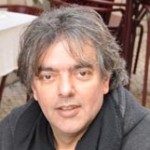Link to Pubmed [PMID] – 6237736
Cell. Immunol. 1984 Nov;89(1):223-31
The number and nature of the “signals” required for lymphocyte activation have been so repetitively and academically discussed over the last 15 years that both the readers and the authors appear exhausted by such exercises. Yet, what may be considered to be the essential question, the basis for self-nonself discrimination, remains to be clarified. Since it has been established that clonal expansion and maturation to effector functions are brought about by polyclonally (“immunologically nonspecific”) active factors, it is obvious that the crucial “step” in this context is the initial interaction of antigen with specific receptors of immunocompetent lymphocytes. This initial discriminatory event appears to proceed differently on the various cell subsets. We first deal with the mechanism of induction and growth of cytotoxic-T-lymphocyte precursors, and then discuss the inductive requirements leading to proliferation of T helper cells.
